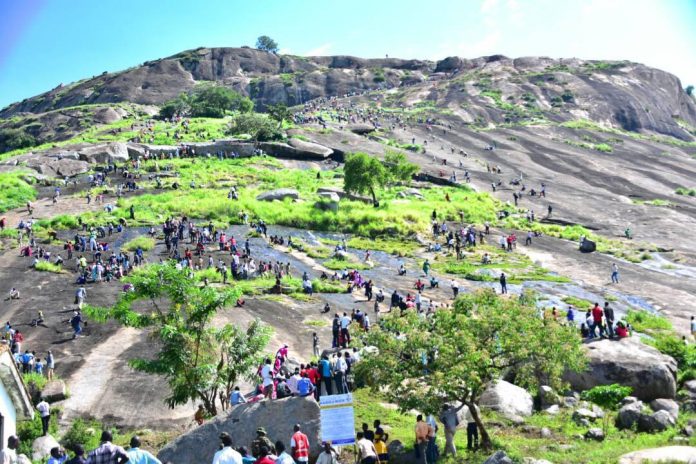National Military museum to be built in Katonga
In 2020, the President of Uganda, H.E. Yoweri Kaguta Museveni, officially launched the construction site in Katonga, Mpigi District, where the UPDF is diligently working on the Uganda National Military Museum.
President Museveni, during the launch, expressed optimism about the project's potential. The estimated cost of the museum is Ugx 110 billion, and it is anticipated to become a marvel,...
Davido’s concert in Uganda
Renowned Nigerian artist, David Adedeji Adeleke, popularly known as Davido, is set to grace the Ugandan stage with his first official concert in the country on Good Friday, March 29, 2024. This highly-anticipated event is organized by Timeless Concerts Kampala and Eastern Vibes, promising a musical extravaganza that marks Davido’s inaugural live performance in Uganda. The venue for the...
New gorilla families in Bwindi
The Uganda Wildlife Authority (UWA) announced the opening of new gorilla families for tracking in Bwindi Impenetrable National Park. This development marks a significant leap forward in gorilla conservation and provides more opportunities for tourists to experience one of the world's most awe-inspiring wildlife encounters.
The Uganda Wildlife Authority shared this update on January 17, 2024, through a formal communication...
UWA updates conservation tariffs
In a bid to strengthen wildlife conservation and sustainable tourism, Uganda Wildlife Authority (UWA) is set to implement conservation tariffs review starting July 1st, 2024, so as to give time to tourists and stakeholders to adapt to the changes in pricing structure with a notable change in the cost of gorilla permits. This decision, communicated on January 17th, 2024,...
UWEC to manage Entebbe Botanical gardens
Prime Minister Robinah Nabbanja Musafiri has officially transferred the management of Entebbe Botanical Gardens from the Ministry of Agriculture, Animal Industry and Fisheries to the Uganda Wildlife Education Conservation Center (UWEC). This move, following a presidential directive, aims to enhance tourism and conservation efforts.
During the handover ceremony, Premier Nabbanja emphasized the government's commitment to biodiversity conservation and tourism growth....
Lakes and rivers in Buganda
The Buganda Kingdom has series of small sacred lakes and river that have not received much attention. These are regarded as places of divinity, danger and liminal makers. the Baganda take these lakes and rivers as their ancestral homes and go to there to make sacrifices to them. These places include; Kabaka's lake, Lake Wamala, River Ssezibwa, Lake Victoria...
Uganda hosts NAM and G77 summits
The Member States of the Non-Aligned Movement NAM and G77 unanimously chose Uganda to host the 19th Summit of the Heads of State and Government. This decision was made on January 21, 2020 and scheduled to take place from January 15th to 20th, 2024, at Speke Resort & Convention Center in Munyonyo.
This summit serves as a platform for leaders...
Uganda Reptile Village
Reptile Village is located 3 km off the Kampala-Entebbe highway in Entebbe and was founded by Yasin Kazibwe in 2002. It was started so as to sensitize and educate people about protecting and conserving natural resources including forests, water bodies and among others. Yasin, a dedicated reptile expert, has rescued over 40 snake species and stands as a habitat ...
Kagulu hill
Kagulu hill is located in Buyende district, Busoga sub-region in eastern Uganda on the southern shores of Lake Kyoga. The peak of the hill is 1,067 meters above sea level which offers a view of Lake Kyoga depression. it is also bordered by the Victoria Nile to the west, the Mpologoma River to the east, and Lake Victoria to...
Wanale Ridge: All you need to know
Wanale ridge is located in Bumboi village, Busamaga parish, Bungokho-Mutoto sub-county Mbale district, Eastern Uganda. The trailhead for hiking Wanale is 16 km east of Mbale city via Busamaga primary school road. Wanale ridge rises 1,749 meters above sea level at the foothills of Mount Elgon, an extinct volcano that straddles the borders of Uganda and Kenya.
According to the...
















